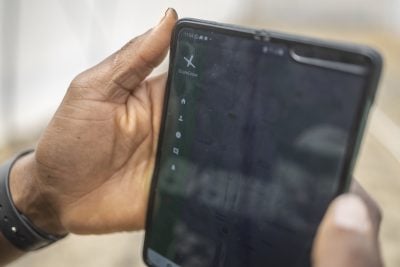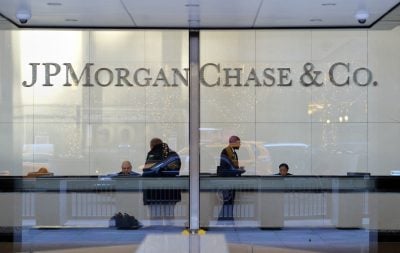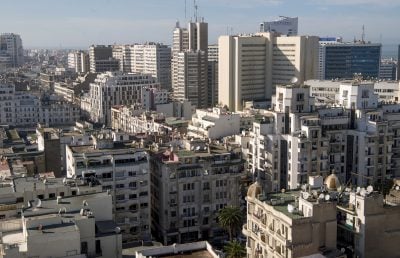As the world was reeling from the Covid-19 pandemic, the International Monetary Fund (IMF) issued an especially prescient economic statement in the April edition of its World Economic Outlook. The Fund said that advanced economies with well-equipped health systems and the privilege of issuing reserve currencies will, naturally, be better placed to endure this crisis.
As the pandemic unfolded, advanced economies did just that, especially on both sides of the Atlantic. Authorities injected countercyclical fiscal and monetary stimuli worth several trillions of dollars into their economies to augment social safety nets and engineer a speedy post-virus-containment recovery.
After activating the general escape clause in the European Union’s (EU’s) fiscal rules – which allowed member countries to overshoot institutional deficit targets – most EU governments injected more than $6trn into their economies, essentially becoming insurers of last resort.
The European Central Bank (ECB) expanded its bond-buying to help absorb the shock. Policy responses taken by US authorities were also unprecedented in scale and responsiveness. The IMF estimates that advanced economies have injected more than $14trn into their economies since the outbreak of the pandemic.
Avoiding a solvency crisis
Given the coronavirus’s rapid spread and the implementation of containment measures that resulted in sharp supply and demand shocks, a resulting liquidity crisis was among the most important short-term risks facing sovereigns and corporates.
The massive injection of liquidity by countries with the privilege of issuing reserve currencies, ensured the liquidity crisis did not morph into a solvency crisis and a cascade of bankruptcies.
In this regard, the decision by the US Federal Reserve to enhance the liquidity provision via dollar swap lines was a salutary move intended to avert the risk of contagion in the context of financial globalisation. Understandably, a torrent of defaults in developing and emerging markets would pose a threat to the financial stability of advanced economies.
However, while the Fed’s bold move may help reduce dollar funding strains during the Covid-19 crisis, its swap lines target very few countries, mainly advanced economies and only a few emerging markets.
This underscores the extent to which Africa remains excluded from the most efficient first lines of defence against liquidity crises. This despite the fact that, by virtue of its economic structure and patterns of trade, Africa, more than any other region, was set to face the most acute shortages of dollar liquidity.
African liquidity under the cosh
Some parts of the developing world feature regional financing arrangements that help mitigate the negative effects of crisis. Examples include the Arab Monetary Fund, the Eurasian Fund for Stabilisation and Development, and East Asia’s Chiang Mai Initiative Multilateralisation – Africa has no equivalent arrangement.
Furthermore, commodities remain the primary source of foreign exchange earnings across Africa, accounting for more than 90% of export earnings in countries such as Angola and Nigeria. Consequently, plummeting commodity prices following the outbreak of the pandemic negatively affected the liquidity position of sovereigns and corporates.
In additions several other channels exist through which the Covid-19 downturn has exacerbated the risk of liquidity crisis across Africa – including tourism, remittances, foreign direct investment, and capital flows – via sudden stops and massive capital outflows from the region.
The shortage of dollar liquidity in Africa’s formal interbank market and the broader economy was worsened by harmful ‘perception premiums’ and the inherent difficulties the region faces when trying to raise foreign currency-denominated debt in international capital markets.
Interest rate spreads widened significantly, by more than 1,000 basis points on average, twice as much as was recorded at the height of the 2008 financial crisis and temporarily shut out sub-investment-grade sovereign borrowers from global capital markets following the tightening of financing conditions.
African governments that could not issue reserve currencies and lost access to international capital markets at the height of the crisis increased their external liabilities by tapping into the IMF’s emergency response facility.
IMF lending to Africa has increased significantly from an annual pre-pandemic average of $4.2bn to more than $24.9bn. Since the outbreak began, Africa’s three largest economies (Egypt, Nigeria and South Africa) have received combined assistance of $15.5bn from the IMF to meet urgent balance of payments needs stemming from the pandemic, with South Africa making history by taking its first loan.
Under the G20 Debt Service Suspension Initiative (DSSI), which offers relief on official bilateral debt service payments (principal and interest) to 73 low-income countries, 37 eligible African nations could free up around $6.5bn.
Threat of downgrade
However, the benefits of the DSSI – despite its being the most ambitious initiative of its kind in both size and scope – remain markedly limited. In a best-case scenario, the relief it could feasibly offer represents less than 15% of total annual debt service payments ($44bn) owed by African countries to their external creditors this year.
According to World Bank data, only four DSSI-eligible African countries would see their external financing requirements for 2020 reduced by 1% of GDP or more through participation. Moreover, two countries, Angola and Kenya, would account for more than 50% of the combined deferred payment under the initiative.
Kenya, Nigeria and six other African countries have opted out of the DSSI over concerns that participation could trigger credit rating downgrades, which would shut them out of international capital markets.
In effect, some ratings agencies have threatened to downgrade countries participating in the DSSI, even though the deferral is net present value neutral and therefore does not reduce the total payment debtors will make to participating creditors during the three-year repayment period that will follow a one-year grace period.
Nonetheless, Moody’s, for one, has placed Cameroon and Ethiopia on review, reflecting expectations that their participation in the DSSI heightens default risks on privately-held debt.
Downgrade dangers are hardly the only problem with the DSSI. Its limited benefits also reflect Africa’s changed debt profile, which has shifted dramatically over the last several years from concessional to private creditors, most of whom are not participating in the DSSI.
The improving macroeconomic environment and Africa’s relatively strong growth prospects have enabled regional governments to attract more private capital, which has helped narrow large trade and infrastructure financing gaps and support growth through Eurobond issuances. In addition to committing to debt transparency under the DSSI, beneficiary countries are not permitted to contract new non-concessional debt during the suspension period.
The benefits of Special Drawing Rights
The issuance by the IMF of additional Special Drawing Rights (SDRs) – Fund reserve assets made up of a basket of currencies – would be much welcomed and deeply beneficial for troubled markets.
SDR issuance has been successfully used in the past, including during the 2008 global financial crisis, to inject liquidity into the global economy and ease pressure. They are an unconditional resource allocated on a transparent basis and will be the most cost-effective response to this ongoing crisis. They will not expose countries to risks of downgrade or constrain access to private capital.
SDR issuance will benefit low-income DSSI-eligible African countries as well as those nations, like Nigeria and Kenya, that opted out of the initiative to preserve access to international capital markets.
These larger regional economies, which were excluded from the Fed’s swap lines, are important drivers of growth and intraregional trade. Boosting their reserve base through new SDR issuance would reduce the countries’ exposure to exchange rate volatility and liquidity risks, as well as improve investor confidence, spurring Africa’s post-containment economic recovery.
New issuance of SDRs will instantaneously increase the level of foreign exchange reserves of all IMF member countries and help build the confidence needed to accelerate recovery.
Still, in addition to sharing in the ‘seigniorage’ (the difference between the face value of coins and their production costs) of creating international money, new SDR issuance is likely to benefit low-income countries disproportionately, in part because IMF quotas are less skewed towards large and industrialised economies.
The Washington-based Peterson Institute for International Economics estimates that a $500bn issuance would allocate more than $22bn to DSSI-eligible countries (almost double the $11.5bn of relief offered through DSSI debt suspension) and boost their combined international reserves by almost 10%.
Democratising SDRs
Recent history offers a compelling argument for the issuance of new SDRs to deal with the Covid-19 crisis. Dominique Strauss-Kahn, the IMF managing director between 2007-11, who oversaw the issuance of $250bn worth of SDRs to address the fallout from the 2008 financial crash, at the time raised a very pointed question.
To paraphrase, Strauss-Kahn asked, “Why would the Fed and ECB have the power to create money to support their economies and not African central banks?”
In the 1970s, the power of issuing a reserve currency belonged almost exclusively to the US, which Valéry Giscard d’Estaing, the French Finance Minister and later President, ascribed to the ‘exorbitant privilege’ of the dollar. In the decades since, that privilege has been extended to other advanced economies and their currencies, such as the euro and Japanese yen.
The Covid-19 pandemic has unmasked the inequalities inherent in our current global financial architecture. In the short term, SDR issuance will mitigate the risk of liquidity crunches and give governments that have neither the fiscal space nor the privilege of issuing reserve currencies the financial wherewithal to address the pandemic.
And in the long run, democratising the issuance of SDRs will be crucial to reforming the international monetary and financial system and preparing our world for future, and possibly more frequent and graver, global crises.
Hippolyte Fofack is Chief Economist at the African Export-Import Bank (Afreximbank).
Related articles
How can special drawing rights help African countries cope with Covid-19?
Africa and creditors wake up to debt dilemma
Credit rating agencies’ harsh stance is hurting Africa
Hippolyte Fofack: A mightier, united Africa will emerge from the coronavirus downturn
Want to continue reading? Subscribe today.
You've read all your free articles for this month! Subscribe now to enjoy full access to our content.
Digital Monthly
£8.00 / month
Receive full unlimited access to our articles, opinions, podcasts and more.
Digital Yearly
£70.00 / year
Our best value offer - save £26 and gain access to all of our digital content for an entire year!
 Sign in with Google
Sign in with Google 



